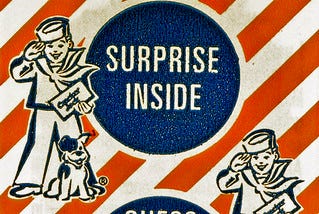This article is part of a project explaining the deeper meaning of Sun Tzu’s classic work on strategy. In it, we look at the Chinese of the original text on small section after another, going through the whole book in order. See this article for the book’s beginning lines.
These are the lines from the beginning of the second section of Chapter 5. This chapter is about the methods using force and momentum. These lines discuss the two types of actions, direct action and surprise, in more detail.
The ideas here a big, applying to all forms of competition, and non-intuitive. They require much more explanation than simple translation.
The Scope of Action
The first three lines introduces the basic use of direct action versus surprise, but first we have this general statement about them.
(In the quotations from The Art of War and the Ancient Chinese Revealed below, we summarize each Chinese character as a single English word shown in < > brackets. The Chinese is followed by a sentence from my English translation.)
<All> <battle> <is,>
It is the same in all battles.
Though the Chinese character used means <battle>, more generally, it means a “meeting.” It the context of war, we usually think in terms of a meeting of hostile opponents, but taken in broader idea of competition as a comparison, the meaning of the Chinese is more general. All competition is a comparison between at least two alternatives. Alternative “meet” when they are compared in a battle field or in our minds. The purpose of this meeting is to determine which alternative is superior.
The Job of Direct Action
The rest of this article is reserved for our paid subscribers. Become a free subscriber for weekly previews and one monthly article like what follows. To get full weekly articles become a paid subscriber.
Keep reading with a 7-day free trial
Subscribe to Practical Strategy Based on Sun Tzu's Art of War to keep reading this post and get 7 days of free access to the full post archives.





